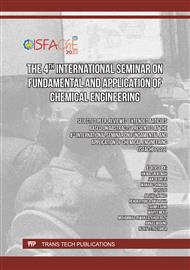[1]
J. . McCabe and A. W. . Walls, Applied Dental Materials, 9th ed. United Kingdom: Blackwell Publishing Ltd, 2008.
Google Scholar
[2]
R. Krishna Alla Scholar et al., "Conventional and Contemporary polymers for the fabrication of denture prosthesis: part I-Overview, composition and properties," ~ 82 ~ Int. J. Appl. Dent. Sci., vol. 1, no. 4, p.82–89, 2015, [Online]. Available: www.oraljournal.com
Google Scholar
[3]
N. Murakami, N. Wakabayashi, R. Matsushima, A. Kishida, and Y. Igarashi, "Effect of high-pressure polymerization on mechanical properties of PMMA denture base resin," J. Mech. Behav. Biomed. Mater., vol. 20, p.98–104, 2013.
DOI: 10.1016/j.jmbbm.2012.12.011
Google Scholar
[4]
K. . Anusavice, C. Shen, and H. R. Rawis, Phillips' Science of Dental Materials, vol. 12th, no. 1. 2013. [Online]. Available: https://www.researchgate.net/publication/269107473_What_is_governance/link/548173090cf22525dcb61443/download%0Ahttp://www.econ.upf.edu/~reynal/Civil wars_12December2010.pdf%0Ahttps://think-asia.org/handle/11540/8282%0Ahttps://www.jstor.org/stable/41857625
Google Scholar
[5]
M. S. Zafar, "Prosthodontic applications of polymethyl methacrylate (PMMA): An update," Polymers (Basel)., vol. 12, no. 10, p.1–35, 2020.
DOI: 10.3390/polym12102299
Google Scholar
[6]
Q. Hu, B. Li, M. Wang, and J. Shen, "Preparation and characterization of biodegradable chitosan/hydroxyapatite nanocomposite rods via in situ hybridization: A potential material as internal fixation of bone fracture," Biomaterials, vol. 25, no. 5, p.779–785, 2004.
DOI: 10.1016/S0142-9612(03)00582-9
Google Scholar
[7]
W. S. Chow, W. L. Tham, and Z. A. Mohd Ishak, "Improvement of microstructure and properties of poly(methyl methacrylate)/hydroxyapatite composites treated with zirconate coupling agent," J. Thermoplast. Compos. Mater., vol. 25, no. 2, p.165–180, 2012.
DOI: 10.1177/0892705711408163
Google Scholar
[8]
J. M. Aldabib and Z. A. M. Ishak, "Effect of hydroxyapatite filler concentration on mechanical properties of poly (methyl methacrylate) denture base," SN Appl. Sci., vol. 2, no. 4, p.1–14, 2020.
DOI: 10.1007/s42452-020-2546-1
Google Scholar
[9]
W. L. Tham, W. S. Chow, and Z. A. M. Ishak, "Simulated body fluid and water absorption effects on poly(methyl methacrylate)/hydroxyapatite denture base composites," Express Polym. Lett., vol. 4, no. 9, p.517–528, 2010.
DOI: 10.3144/expresspolymlett.2010.66
Google Scholar
[10]
A. J. White and F. E. Filisko, "Tacticity Determination of Poly(Methyl Methacrylate) (Pmma) By High-Resolution Nmr.," J. Polym. Sci. Part B, Polym. Lett., vol. 20, no. 10, p.525–529, 1982.
DOI: 10.1002/pol.1982.130201003
Google Scholar
[11]
J. G. F. Santos, V. J. R. R. Pita, P. A. Melo, M. Nele, and J. C. Pinto, "Production of bone cement composites: Effect of fillers, co-monomer and particles properties," Brazilian J. Chem. Eng., vol. 28, no. 2, p.229–241, 2011.
DOI: 10.1590/S0104-66322011000200007
Google Scholar
[12]
M. C. Arenas-Arrocena et al., "New Trends for the Processing of Poly(Methyl Methacrylate) Biomaterial for Dental Prosthodontics," Acrylic Polym. Healthc., no. April, 2017.
DOI: 10.5772/intechopen.69066
Google Scholar
[13]
J. ALDABIB, "Effect of Silane Coupling Agent Content on Mechanical Properties of Hydroxyapatite/Poly(methyl methacrylate) Denture Base Composite," Int. J. Chem. Technol., vol. 5, no. 1, p.37–45, 2020.
DOI: 10.32571/ijct.783998
Google Scholar



